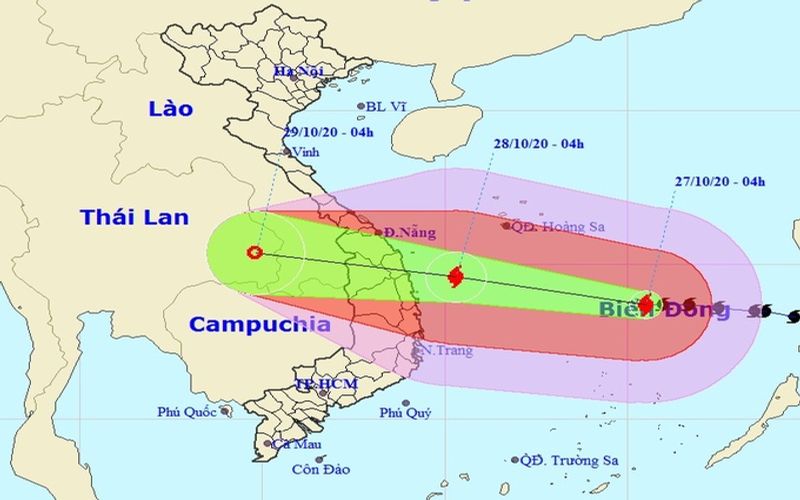Vietnam relocates over 1.2 million people ahead of powerful storm Molave
More than 368,000 people, including soldiers, members of the police force and civilian volunteers have been mobilized to assist residents in risky areas.
As storm Molave is moving fast and set to cause torrential rain and landslides in central Vietnam on October 28, Vietnamese authorities are planning to relocate more than 1.2 million coastal residents from vulnerable areas to safer places, Kinh te & Do thi reported.
At an urgent online meeting on October 26 to devise plans to mitigate the impact of storm Molave, local leaders were asked to postpone unnecessary meetings to focus on the work of ensuring safety for residents.
Up to 59,477 fishing vessels with 289,298 workers onboard have been notified to find shelter while the search for remaining missing victims and minimize possible losses goes on.
More than 368,000 people, including soldiers, members of the police force and civilian volunteers have been mobilized to assist residents in risky areas.
Prime Minister Nguyen Xuan Phuc said at the meeting that localities must be on high alert and prepare their best flood prevention measures. "If the storm comes as strong as forecast, damage from rains and floods will be extremely huge," said the PM.
A map detailing the movement of storm Molave. Photo: NCHMF |
Mr. Tran Quang Nang, head of the Weather Forecast Department under the National Centre of Hydro-meteorological and Forecasting (NCHMF) told Kinh te & Do thi that Molave is a powerful cyclone.
The storm intensity was forecast to be equivalent to typhoon Damrey, Ketsana and Xangsane that affected Vietnam in 2017, 2009 and 2006 respectively at the fourth natural disaster risk level, Mr. Nang stressed.
At 7:00am on October 27, the center of the storm was located around 230km east-northeast of Song Tu tay islet, and with a wind speed of up to 165 kph, 30 kph higher than on October 26 afternoon, according to the NCHMF.
The storm is moving westward at a speed of 25 kph, gradually intensifying, and is forecast to make landfall over Quang Nam, Quang Ngai and Binh Dinh provinces with wind gusts of 165 kph at 1:00pm on October 27. It will then weaken on October 28 and become a low pressure area over eastern Thailand with winds of less than 40 kph.
The storm circulation with a cold spell would cause heavy rains on a large scale, and localities in over 1,000 km from Nghe An to Phu Yen provinces would expect torrential downpours of between 200-400mm and strong winds between October 27 and 29.
Nghe An, Ha Tinh and Quang Binh have been warned of prolonged downpours until October 30 with total rainfall of up to 700mm. Mountainous areas are at high risk of landslide.
"This is the strongest storm to hit Vietnam since the beginning of this year," said Mai Van Khiem, the NCHMF’s director. He recommended residents limit outdoor activities from October 27.
With giant storm Molave set to make landfall, authorities in the central provinces have closed all public beaches, banned vessels from sailing out and told over one million students to stay home on October 27 and 28.
The central Vietnam, home to popular ancient towns, beautiful beaches and world famous caves, has been bombarded by historic flooding and deadly landslides for the past three weeks, which caused damage that government officials described as the worst in five years. At least 130 people have been killed by floods and landslides between October 6 and 25.












